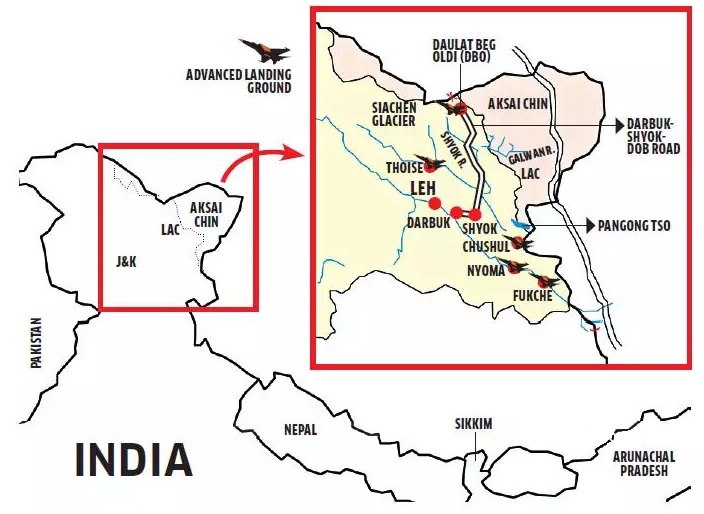Darbuk-Shyok-Daulat Beg Oldie Road | 08 Jun 2020
Why in News
The Darbuk-Shyok-Daulat Beg Oldie (DSDBO) road has been in the making for around two decades and is expected to be completed by 2020.
Key Points
- The 255-km road from Darbuk traverses at an altitude of 14,000 feet and reaches Shyok, the last Indian village in the region.
- This road joins Leh to the Karakoram Pass, which divides Ladakh from China’s Xinjiang province.
- Between Shyok and Karakoram Pass lies Daulat Beg Oldie (DBO), a plateau at an altitude of over 16,000 feet and the location of an Advanced Landing Ground (ALG) used by the air force to drop supplies.
- DBO is India’s northernmost corner, which in army parlance is called Sub-Sector North.
- Background:
- The road’s construction was started in 2000 and was to be completed by 2012 at a cost of Rs. 320 crore under the monitoring of the Prime Minister’s Office (PMO).
- However, the construction could not be finished as the road was aligned with the Shyok riverbed that led to it being damaged every summer during flooding.
- Later, major portions of the road were realigned, keeping them away from the river.
- In October 2019, the 430 m Colonel Chewang Rinchen Setu over Shyok river was inaugurated that joins Durbuk to DBO in Eastern Ladakh.
- Along with it, the Siachen Glacier area of Ladakh was declared open for tourists by the Government of India.
- India has decided to not stop road construction on its side of the Line of Actual Control (LAC) despite the border confrontations and objections by China as it does not want India to utilise the DSDBO road to its full potential.
- Significance of the Road:
- DBO is located only 9 km away from the LAC with China and the road will help manage the border and the areas adjoining Aksai Chin, Chip Chap River and Jiwan Nalla.
- It will also ensure faster deployment of troops in the area.
- Before the laying of the road, the only way to reach the area was via the ALG, where heavy-lift aircraft can land.
- From the DSDBO road, a road branches off towards Galwan Valley which had prompted the stand-off in Galwan Valley.
- Indian troops have been patrolling up to this area but they will have road access and can be present there.
Way Forward
- In the Wuhan (2018) and Mahabalipuram (2019) summits, both India and China had reaffirmed that they would make efforts to ensure peace and tranquillity in the border areas.
- On 1st April 2020, India and China completed their 70 years of diplomatic relations. Both countries have resolved border issues peacefully in the past four decades which gives them hope that the tensions will subside soon.
- India and China are amongst the largest economies, demography, markets and militaries of the world. Therefore, it is in the interests of both the countries to align their energies for the growth and development of their people, region and global peace.

